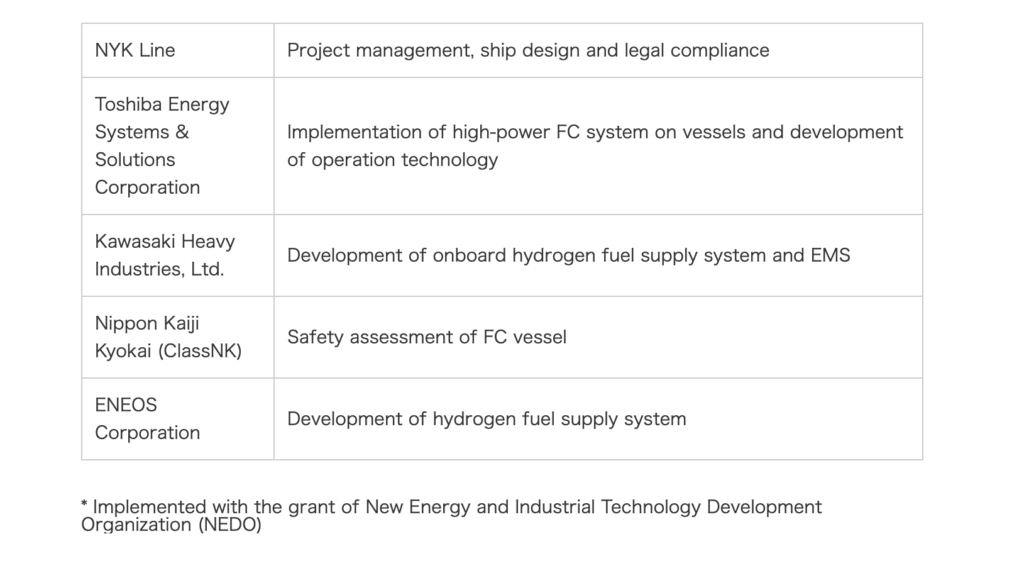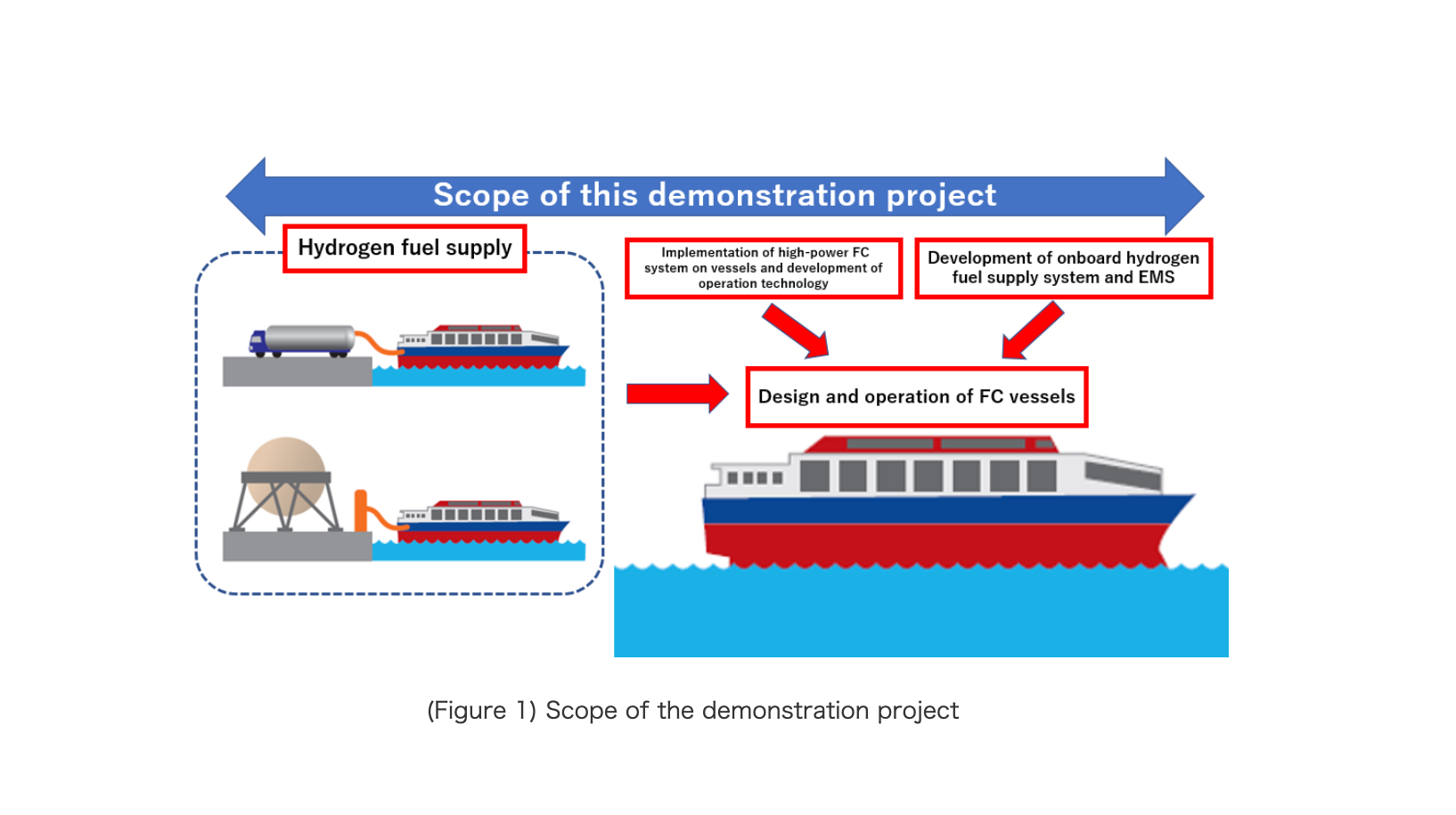Japan’s First Effort to Achieve Zero Emissions by Using Hydrogen to Power Vessels
NYK Line, Toshiba Energy Systems & Solutions Corporation, Kawasaki Heavy Industries Ltd., Nippon Kaiji Kyokai (ClassNK), and ENEOS Corporation (i.e., “the Companies”) are pleased to announce that the New Energy and Industrial Technology Development Organization (NEDO) has approved the Companies’ participation in a demonstration project for the commercialization of high-power Fuel Cell (FC) vessels. The project, which will begin in September2020, is Japan’s first effort to develop a commercially available FC vessel and carry out a demonstration operation involving the supply of hydrogen fuel. By using FCs as a power source, it will be possible to completely eliminate greenhouse gas (GHG) emissions during navigation.
Target
The Companies will develop an about150 ton class (i.e. passenger capacity: approx.100) high-power FC vessel that will function as a medium-sized tourist ship, and in 2024 carry out a demonstration operation of the FC vessel together with a demonstration supply of hydrogen fuel. We will begin an FC vessel and hydrogen-fuel-supply feasibility study in September2020 and start designing the vessel and hydrogen-fuel-supply equipment in 2021. Construction and production is expected to start in 2023, and pilot operation of the vessel along the coast of Yokohama port is scheduled to begin in 2024.
Background
With the entry into force of the Paris Agreement in 2016, global momentum for decarbonization has increased, and reducing GHG emissions has become an issue in the shipping sector. In 2018, the International Maritime Organization (IMO) set a goal of halving GHG emissions from the international shipping sector by 2050 and reaching a target of zero as early as the end of this century.The utilization of FC systems in transport beyond passenger cars is cited as an issue in the action plan of industry, academia, and government for the realization of a hydrogen society in the “Strategy for Developing Hydrogen and Fuel-Cell Technologies ” formulated by the Japanese government in 2019. From the development of small FC vessels (gross tonnage less than 20 ton) that have already been promoted in Japan, the spread and expansion of high-power FC to larger vessels is expected.
Overview of demonstration project
The Companies will target newly constructed domestic vessels in the entire vessel value chain (i.e., hydrogen equipment development, hull design and construction, operation, fuel supply), focusing on the following items:
1. Implementation of high-power FC system on vessels and development of operation technology
2. Development of onboard hydrogen fuel supply system/equipment;
development of energy management system (EMS) combining FC and storage battery
3. Development of hydrogen fuel supply system
4. Application to vessels through new vessel design and development
(i.e., newly design and develop the vessel’s hull so that it can optimally operate with FC as power)
Role of each Company participating in the demonstration project

Schedule
Period: September 2020 to the end of February 2025(planned)

Overview of each Company
<NYK Line>
Headquarters: Tokyo
President: Hitoshi Nagasawa
Website: https://www.nyk.com/english/
<Toshiba Energy Systems & Solutions Corporation>
Headquarters: Kanagawa
President & CEO: Mamoru Hatazawa
Website: https://www.toshiba-energy.com/en/index.htm
<Kawasaki Heavy Industries, Ltd.>
Headquarter: Tokyo
President & CEO: Yasuhiko Hashimoto
Website:https://global.kawasaki.com/en/
<Nippon Kaiji Kyokai (ClassNK)>
Headquarter: Tokyo
President & CEO: Hiroaki Sakashita
Website:https://www.classnk.com/hp/en/index.html
<ENEOS Corporation>
Headquarter: Tokyo
Representative Director, President: Katsuyuki Ota
Website:https://www.eneos.co.jp/english/



